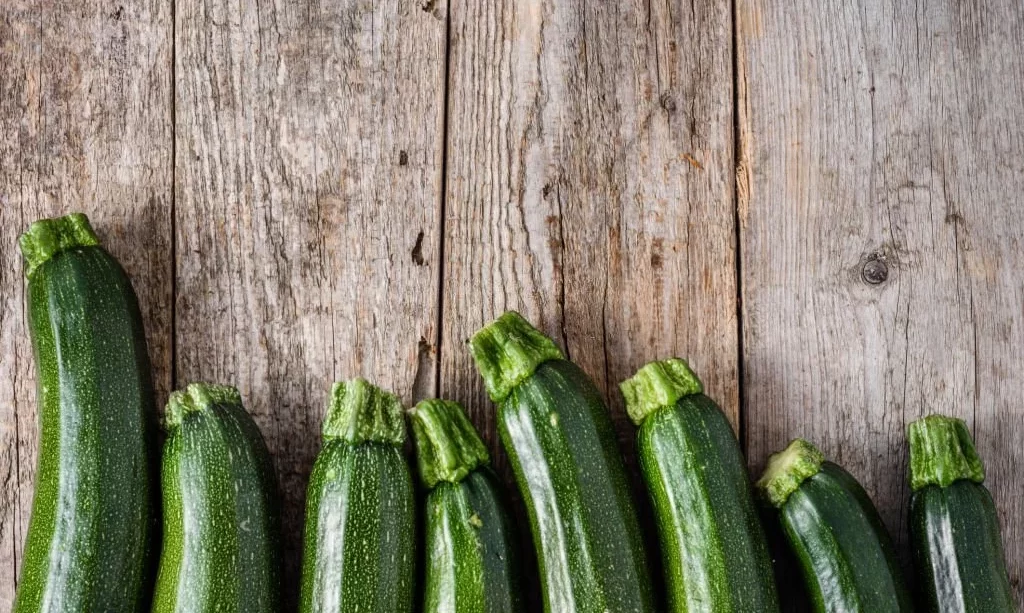In the world of culinary delights, zucchini and Italian squash stand as two versatile and beloved ingredients that grace our kitchens with their mild flavor and adaptability in a wide range of dishes. These vegetables, often confused due to their similar appearances, have a culinary connection that begs exploration. Are zucchini and Italian squash one and the same, or do they each bring something distinct to the table? Let’s embark on a culinary journey to unravel the mystery behind the relationship between these two delectable ingredients.
- 1 POUND PER ORDER
Zucchini and Italian Squash Overview
Before we delve into the nuances that set zucchini and Italian squash apart, let’s take a moment to appreciate the fundamentals of these vegetables:
- Zucchini (Cucurbita pepo var. cylindrica): Zucchini, often referred to as “courgette” in various parts of the world, is a summer squash known for its slender, elongated shape and vibrant green skin. It belongs to the Cucurbita pepo species and is a popular ingredient in Mediterranean and American cuisines. Zucchini’s tender flesh and mild, slightly sweet flavor make it a versatile addition to a myriad of dishes, from sautés to fritters and even baked goods.
- Italian Squash (Italian Zucchini): Italian squash, sometimes simply called “Italian zucchini,” is closely related to zucchini as it also belongs to the Cucurbita pepo species. What sets it apart is its elongated shape and glossy, deep green skin, often with paler stripes. Italian squash is cherished in Mediterranean and Italian cooking, where it adds its delicate flavor and unique texture to pasta dishes, salads, and grilled preparations.
These overviews set the stage for a closer examination of the botanical and culinary distinctions between zucchini and Italian squash, allowing us to appreciate their individual culinary contributions.
Botanical Classification
To understand the relationship between zucchini and Italian squash, it’s crucial to delve into their botanical classification:
- Species Shared: Both zucchini and Italian squash belong to the same species known as Cucurbita pepo, which encompasses a wide variety of summer squash types. This shared species is the foundation of their botanical similarity.
- Cultivar Distinction: The primary difference lies in their cultivars or varieties within the Cucurbita pepo species. Zucchini is a specific cultivar, known as Cucurbita pepo var. cylindrica, characterized by its cylindrical shape and solid green skin. Italian squash, on the other hand, represents a range of cultivars within the same species, often featuring elongated shapes and distinct visual variations.
Visual and Culinary Differences
Visual distinctions play a significant role in discerning between zucchini and Italian squash, influencing their culinary uses:
- Zucchini Appearance: Zucchini typically boasts a slender, straight or slightly curved shape with uniform green skin. Its flesh is tender, and its size ranges from small to medium, making it suitable for various dishes. This vegetable’s consistency and color are prized for culinary applications.
- Italian Squash Characteristics: Italian squash, or Italian zucchini, often displays a longer and more elongated shape. Its skin can vary from deep green to lighter shades and may feature prominent paler stripes. The texture and appearance of Italian squash lend themselves well to specific Italian and Mediterranean recipes.
- Fast Growing and High Producing
- Always Non GMO and Carefully Sourced
- Start Your Journey Towards a Healthy, Plant-Based Living
- A Beautiful Addition to Your Home or Garden!
- Message Us For Anything, We Are More Than Happy To Help You
Flavor Profiles
While zucchini and Italian squash share a mild and adaptable flavor profile, subtle distinctions can influence their use in recipes:
- Zucchini Flavor: Zucchini offers a gentle, slightly sweet flavor with a hint of nuttiness. Its flavor is often described as delicate and versatile, making it a neutral canvas for various seasonings and cooking techniques.
- Italian Squash Flavors: Italian squash, given its elongated shape and potential variations, may have a slightly firmer texture and a flavor that closely mirrors that of zucchini. However, its distinct appearance can influence the overall sensory experience of a dish.
These subtle variations in flavor, appearance, and texture contribute to the distinct culinary roles of zucchini and Italian squash. Understanding these differences allows chefs and home cooks to select the ideal ingredient for their specific recipes and culinary preferences.
Culinary Uses
Zucchini and Italian squash offer a world of culinary possibilities, and their uses extend far beyond mere similarities:
- Zucchini Culinary Versatility: Zucchini’s tender texture and mild flavor make it a versatile addition to both savory and sweet dishes. It shines in sautés, stir-fries, and ratatouille, and can even be spiralized into zoodles for a low-carb pasta alternative. When grated, zucchini adds moisture to baked goods like muffins and bread.
- Italian Squash in Mediterranean Delights: Italian squash, true to its name, is a star in Italian and Mediterranean cuisines. Its elongated form and slightly firmer texture make it well-suited for stuffing, grilling, or layering in vegetable lasagna. Italian squash’s vibrant presence is often celebrated in pasta dishes, enhancing both flavor and visual appeal.
Regional Variations and Preferences
The relationship between zucchini and Italian squash is further enriched by regional variations and culinary preferences:
- Naming Differences: In various regions, the terminology may vary. Zucchini is commonly referred to as “courgette” in European countries, while Italian squash is known as “zucchina” in Italy.
- Cultural Significance: Both zucchini and Italian squash hold cultural significance in their respective regions. Zucchini features prominently in Mediterranean and American cuisines, while Italian squash is an integral part of Italian culinary traditions.
- Recipe Adaptations: Regional recipes and preferences often lead to adaptations of dishes. In Italy, for instance, Italian squash may be used in classic recipes like “zucchine alla scapece,” showcasing its unique attributes.
Conclusion: Appreciating the Diversity of Cucurbita pepo
In conclusion, the culinary world is blessed with the diversity of Cucurbita pepo, offering both zucchini and Italian squash as delightful ingredients. While their botanical classification places them within the same species, their distinct cultivars create subtle yet significant differences in appearance, flavor, and texture.
Appreciating these nuances allows us to make informed choices in the kitchen, selecting either zucchini or Italian squash based on the desired sensory experience and the culinary tradition we wish to embrace. Whether you’re savoring a Mediterranean-inspired dish with Italian squash or creating a classic zucchini bread recipe, the beauty of Cucurbita pepo lies in its ability to enrich our culinary repertoire and celebrate the art of gastronomy in all its diverse forms. So, as you navigate the culinary landscape, remember to savor the unique characteristics of both zucchini and Italian squash, each contributing its own flavorful essence to the world of cuisine.





